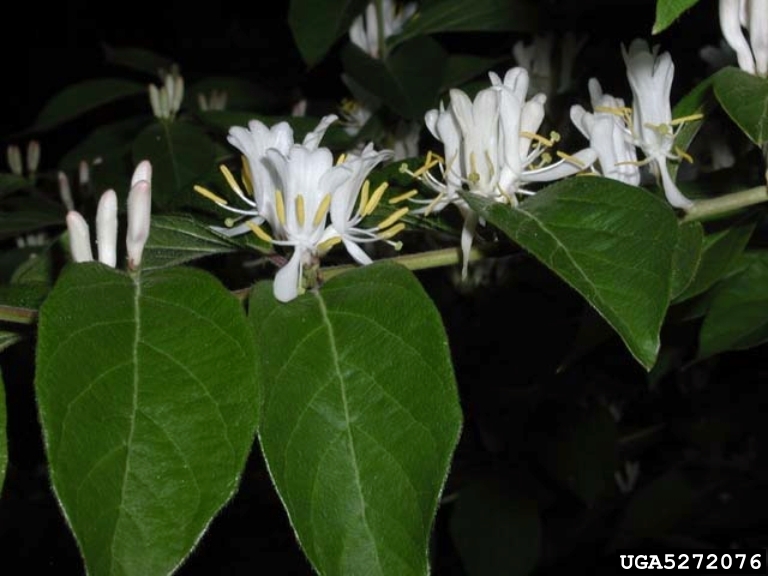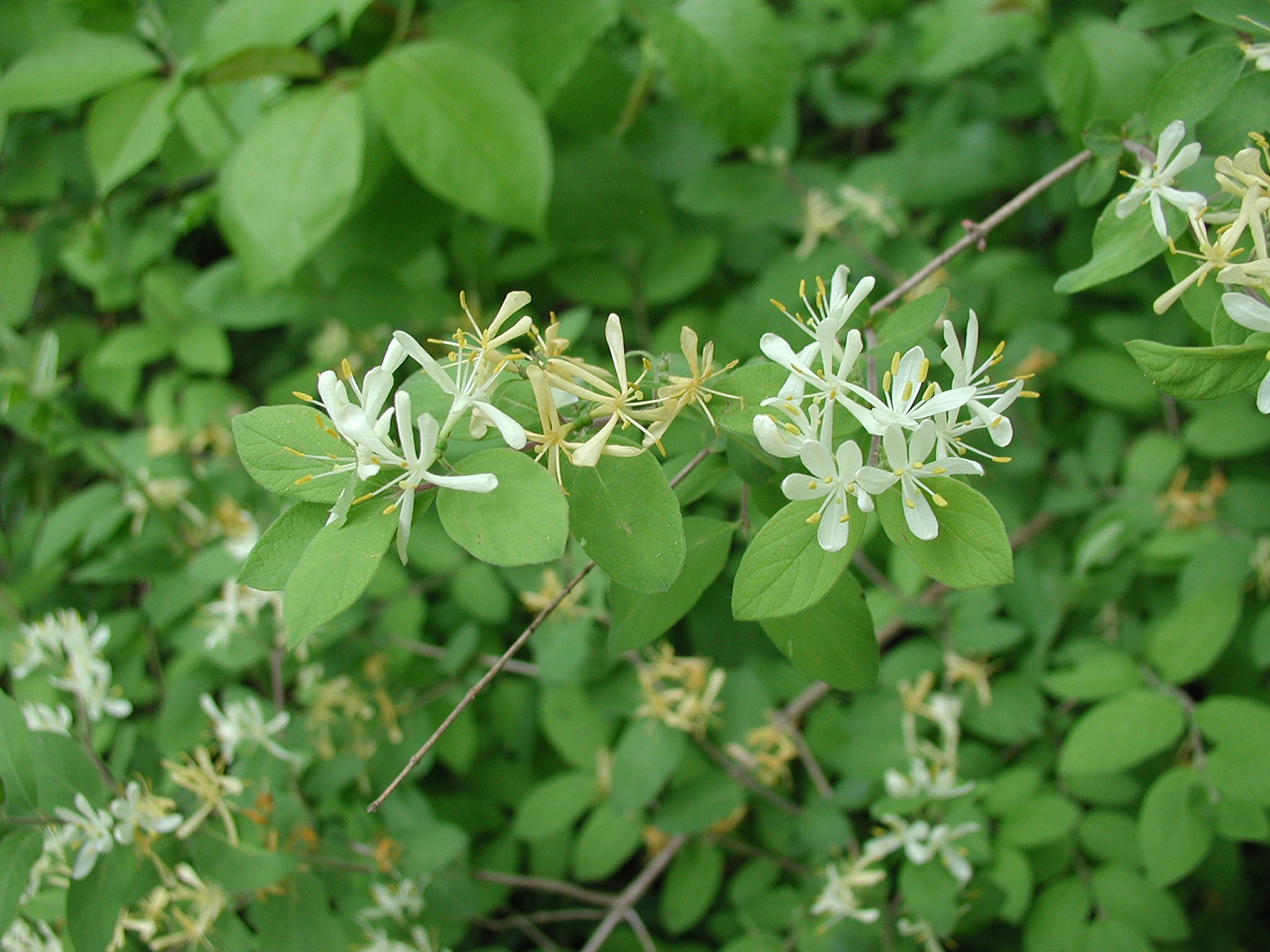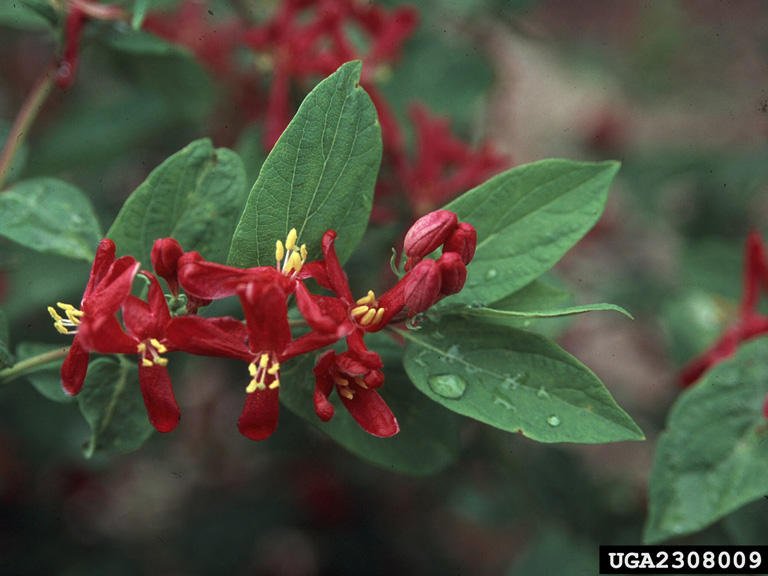Background
Invasive honeysuckles are herbaceous shrubs native to Korea, Japan and China. In the late 1800’s amur honeysuckles were introduced to North America to the Dominion Arboretum in Ottawa and to the Botanical Garden in New York for their attractive flowers. After this they were used as an ornamental plant, wildlife cover and to help with soil erosion.
Invasive honeysuckles are commonly found in old fields, floodplains, forest edges and roadsides. Compared to native species, they leaf out early and are able to hold their leaves into the fall. Their fruit is consumed by birds, allowing seeds to be distributed long distances.
Range
Amur, morrow and tatarian honeysuckles can be found throughout eastern and central United States, as well as Canada. In the United States they range from northeastern states, south to Tennessee and North Carolina. In Ontario, populations have mostly been reported in the central and eastern parts of the province.
Impacts of Invasive Honeysuckles
- Rapidly invade areas, out-competing native plant species by forming dense patches.
- Affect light and nutrient availability to neighboring plants.
- Produce toxic chemicals that prevent other plants from growing in that area.
- Fruit does not offer migrating birds the nutrients needed for long flights compared to native plant species.
- Attract more pollinators causing native species to reduce the amount of seeds they produce.
How to Identify Invasive Honeysuckles
Exotic bush honeysuckles can easily be confused with native bush honeysuckles. Native bush honeysuckles usually have solid stems, compared to the exotics. Check the chart below to identify amur honeysuckle, morrow honeysuckle or tatarian honeysuckle.
INVASIVE
Amur Honeysuckle
(Lonicera maackii)
Details
- Multi-stemmed deciduous shrub reaching 6 m (19.7 ft)
- Leaves are opposite and ovate
- Stems are hollow
- Flowers are white fading to yellow
- Red berries
INVASIVE
Morrow Honeysuckle
(Lonicera morrowii)
Details
- Multi-stemmed deciduous shrub reaching 2.5 m (8.2ft)
- Leaves are opposite and oblong
- Stems are hollow
- Flowers are white fading to yellow
- Red berries
What You Can Do
- Learn how to properly identify invasive honeysuckles, such as amur, morrow and tatarian honeysuckles and how to effectively manage these invasive plants on your property.
- Avoid using invasive plants in gardens and landscaping.
- Buy native or non-invasive plants from reputable garden suppliers. See Grow Me Instead: Beautiful Non-Invasive Plants for Your Garden.
- When an invasive plant is flowering, cut the flower tops and put them into a plastic bag to prevent the plant from going to seed. Do not dispose of invasive plants in the compost pile – discard them in the regular garbage.
- Learn how to effectively manage invasive honeysuckles on your property. The guide to Best Management Practices for Invasive Honeysuckles describes the most effective and environmentally safe control practices for this species.
- When hiking, reduce the spread of invasive plants and seeds by staying on trails keeping pets on a leash.
- If you find Invasive Honeysuckles or other invasive species in the wild, please contact the Invading Species Hotline at 1-800-563-7711, or visit EDDMapS to report a sighting.
Gallery
OFAH/OMNRF Invading Species Awareness Program. (2021). Invasive Honeysuckles. Retrieved from: www.invadingspecies.com.
This factsheet may be reproduced for non-commercial purposes.
Header photo by Hayley Anderson





